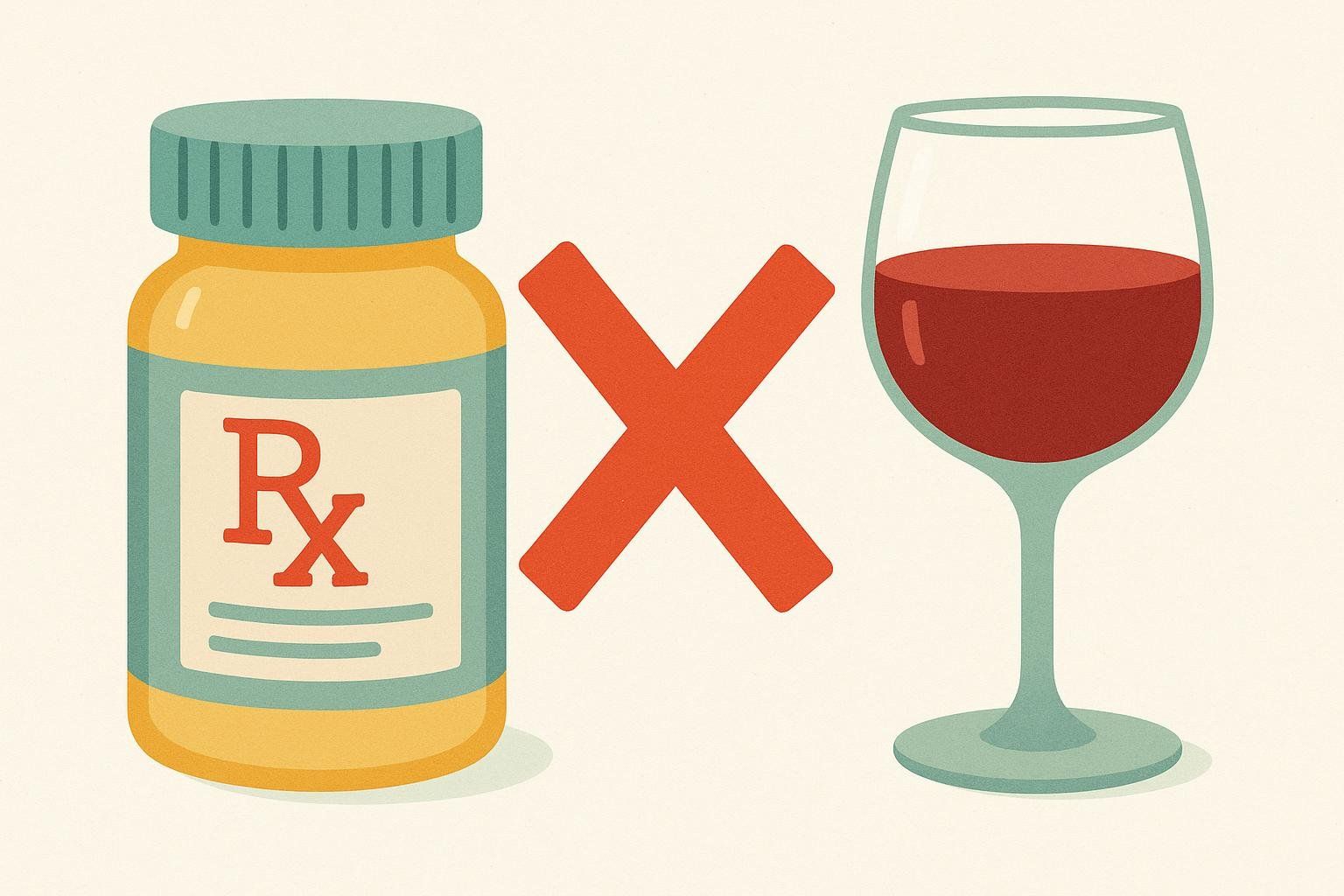Phentermine for Weight Loss: Dosing, Safety, and Results

Phentermine for Weight Loss: Dosing, Safety & Results
Phentermine can help curb appetite and jump‑start weight loss. It’s used short‑term alongside a calorie‑reduced diet, regular movement, and simple habit changes. If you’re researching phentermine for weight loss, this guide covers the essential information on its dosing, safety, and results in 2025.
Quick disclaimer: This article is educational and not medical advice. Always discuss medications, dosing, and monitoring with your healthcare professional.
✅ The quick answer (for searchers):
- Does it work? Yes—when paired with diet and exercise, many people lose about 5–10% of body weight over a few months, though results vary (GoodRx, a 2021 multicenter study on phentermine efficacy).
- Is it safe? It’s FDA‑approved for short‑term use (often up to 12 weeks) and must be prescribed after a medical review. Rare but serious risks exist, so monitoring matters (MedlinePlus, AACE).
- Who qualifies? Typically BMI ≥30, or ≥27 with conditions like high blood pressure or type 2 diabetes (GoodRx).
- What’s the usual dose? Most common options: 18.75–37.5 mg once each morning, or 8 mg three times daily before meals (Lomaira). Take in the morning to avoid insomnia (Mayo Clinic).
- How do I track real progress? Don’t rely on the scale alone—use DEXA to confirm fat loss, visceral fat changes, and lean‑mass retention.
What this guide covers:
- How phentermine works
- Who qualifies and who should avoid it
- Dosing options and timing
- Expected results and timelines
- Side effects, risks, and interactions
- Cost and savings strategies
- How to track progress and protect lean muscle
How phentermine works
Phentermine helps you feel less hungry by lightly stimulating the central nervous system (it’s in the “stimulant‑like” family), so it’s easier to eat fewer calories while you build routines you can keep (Drugs.com, MedlinePlus). Think of it as a booster, not a replacement, for nutrition, movement, sleep, and stress basics.
Key consideration: Pair phentermine with an objective tracking strategy. A baseline DEXA scan plus follow‑ups helps confirm that the weight you’re losing is mostly fat—not muscle (the most accurate body composition test).
Who is (and isn’t) a candidate?
Phentermine is usually considered for adults who are working on diet and exercise and meet one of these:
- BMI ≥30, or
- BMI ≥27 with a related condition (e.g., hypertension, dyslipidemia, type 2 diabetes) (GoodRx).

Do not use phentermine if you:
- Are pregnant or breastfeeding
- Took an MAOI within the past 14 days
- Have glaucoma, hyperthyroidism, severe heart disease, uncontrolled high blood pressure, a history of drug misuse, or extreme agitation (MedlinePlus).
- Have kidney disease: dose adjustments or alternatives may be needed (Mayo Clinic).

Older adults: MedlinePlus notes that people 65+ generally should not take phentermine because safer alternatives may be available (MedlinePlus).
Diabetes: As intake drops, blood sugar can fall; some folks need adjustments to diabetes meds with clinician guidance (AACE).
Dosing: forms, schedules, and timing
Dosing below is summarized from the Mayo Clinic drug reference unless otherwise noted (Mayo Clinic).
- Tablets (generic “phentermine”): 18.75–37.5 mg once daily before or 1–2 hours after breakfast.
- Low‑dose tablets (Lomaira): 8 mg three times daily, 30 minutes before meals.
- Capsules: 15–30 mg once daily, before breakfast or 1–2 hours after breakfast.
- Extended‑release forms: Once daily in the morning; do not crush or chew extended‑release products (MedlinePlus).
Practical tips (Mayo Clinic):
- Take in the morning to minimize insomnia; avoid late‑day doses.
- Don’t self‑increase your dose if weight loss plateaus—talk to your prescriber.
- Short‑term use is standard; many prescribers limit treatment to ~12 weeks (MedlinePlus, AACE).
Expected results: How much weight can you lose?
When combined with lifestyle change, many people lose at least 5–10% of body weight over several months; some see early changes within 2–4 weeks, while others take longer (GoodRx). In a 2021 multicenter study on phentermine efficacy, researchers reported these findings:
- At 3 months: 30 mg led to more weight loss than 15 mg.
- At 6 months: Results were similar between the two doses overall.
- Late responders: About 4 in 10 people who had not yet achieved significant weight loss by month 3 went on to achieve ≥5% body weight loss by month 6.
The key takeaway: Build habits while you’re on it. Weight can creep back after stopping if routines aren’t in place.
Side effects and safety signals
Common:
- Dry mouth, insomnia, restlessness, increased heart rate, constipation/diarrhea, headache (MedlinePlus, AACE).
Serious—seek urgent care:
- Chest pain, fainting, shortness of breath, leg swelling (possible pulmonary hypertension or heart strain) (AACE, Mayo Clinic).
- Severe mood or behavior changes, hallucinations (Mayo Clinic).
Drug interactions and precautions:

- Never combine with MAOIs (within 14 days) due to dangerous blood pressure spikes (MedlinePlus, Mayo Clinic).
- Avoid alcohol; it can worsen side effects (AACE).
- It’s a Schedule IV controlled substance—misuse can cause dependency and harm (Drugs.com).
Fen‑Phen history, in brief
Phentermine was once paired with fenfluramine; that combination was withdrawn due to heart valve damage and pulmonary hypertension traced to fenfluramine. Rare pulmonary hypertension cases have been reported with phentermine alone, but the major historical harms were linked to fenfluramine—not phentermine by itself (MedlinePlus, Mayo Clinic).
Phentermine vs. phentermine/topiramate (Qsymia)
Adding topiramate (the combo Qsymia) can enhance weight loss for some people but has its own titration schedule, side effects, and monitoring needs (Cleveland Clinic). Considering it? Check out our Qsymia dosing and safety guide.
Cost and savings
Generic phentermine is usually inexpensive, and discount cards can drop the price further (GoodRx). Want a strategy to save more across prescriptions? See our prescription savings guide.
A Practical Monitoring Strategy
To maximize benefits and minimize risks, consider these checkpoints with your provider.
Weekly
- Weight trend plus waist circumference
- Sleep quality, daytime energy, and appetite ratings
- Pulse and blood pressure (home cuff if you have hypertension)
Every 8–12 weeks
- Body composition via DEXA to verify fat loss, protect lean mass, and track visceral fat changes (our visceral fat guide)
- Review side effects and overall progress; decide whether to continue, taper, or switch
Anytime
- New chest pain, shortness of breath, fainting, or swelling = stop and seek urgent care (AACE).
Lean Mass Protection Strategy

- Prioritize starting a strength training routine 2–4x/week and hitting your protein targets. Verify progress with periodic DEXA scans (the most accurate body composition test).
What to do if you don’t see results by 4–8 weeks
- Double‑check calories, protein, steps/activity.
- Revisit dose only with your prescriber—don’t self‑titrate (Mayo Clinic).
- Consider combo therapy (e.g., phentermine/topiramate) or a different class if appropriate—discuss with your clinician (Cleveland Clinic).
- Measure what matters: If the scale stalls but DEXA shows fat is dropping and muscle is steady, you’re still winning.
FAQs
What are typical phentermine results?
A common milestone is 5–10% body weight lost across a few months—especially with consistent nutrition, steps, and strength training. Your results depend on dose, adherence, and time (GoodRx, a 2021 multicenter study on phentermine efficacy).
Is phentermine safe long term?
It’s FDA‑approved for short‑term use (often up to 12 weeks) (MedlinePlus, AACE). Off‑label, some clinicians may consider longer use in selected, low‑risk patients based on a 2019 study in the journal Obesity showing greater weight loss with no increase in cardiovascular events over up to 3 years.
When during the day should I take it?
Morning is best to reduce insomnia. Avoid doses within 4–6 hours of bedtime (Mayo Clinic).
Can I drink alcohol on phentermine?
Avoid alcohol; it can worsen side effects and undermine weight‑loss progress (AACE).
Does phentermine cause dependency?
It has misuse and dependence potential and is Schedule IV; use exactly as prescribed and never share your medication (Drugs.com).
How long does phentermine last in your system?
The half‑life is about 20 hours, so it can take roughly 4 days to fully clear after your last dose (GoodRx).
Will I regain weight after stopping?
Regain is more likely if habits fade. Keep the lifestyle foundation (protein, steps, workouts) and track body composition to stay accountable.
Your next step
- Want objective proof you’re losing fat (not muscle)? Book a baseline and 8–12 week follow‑up DEXA scan: Find a DEXA scan near you.
- Prefer a date‑based plan? Try our date‑based weight loss planner to map calories, protein, and activity.
- Exploring medication options? See our 2025 guide to Ozempic alternatives.
Pairing medical support with a data‑driven plan—DEXA body composition tracking, clear nutrition targets, and regular check‑ins—is a reliable way to turn short‑term assistance into lasting success.


